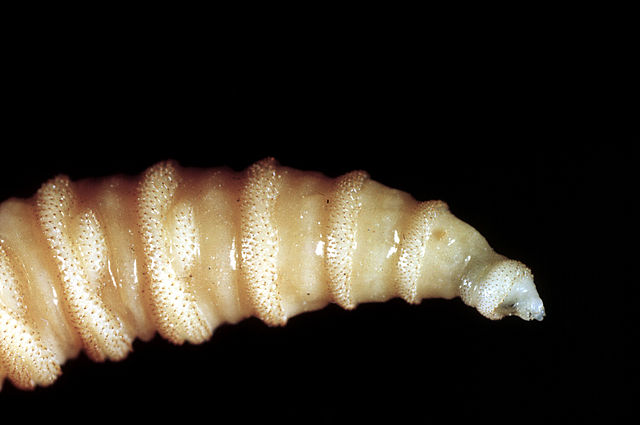
Texas officials are telling residents to check their pets and livestock, and insisting on immediate use of pesticide bait after officials in Mexico confirmed an infection with the flesh-eating New World Screwworm (NWS) less than 70 miles from the US border.
NWS is a horrifying parasitic fly that attacks warm-blooded animals, laying hundreds of eggs in any openings or wounds, even minute ones. The resulting larvae both look and act like screws, boring and twisting into the animal while feasting on its living flesh. The ravenous larvae create ghastly wounds that can be deadly to livestock and wild animals.
Long ago, this ferocious fly was endemic in the US and stymied the livestock industry. However, in the 1950s, eradication efforts using sterile male flies and livestock monitoring began to push the fly population southward. By around 1966, it was cleared from the US, and Mexico zapped the population in the 1980s. By 2006, it was pushed out of Central America, with Panama declaring it eradicated and holding the flies at bay at the Darién Gap at the border with Colombia. However, in 2022, the gap was breached, and the flies have been steadily moving northward.
In July, Mexican officials found an NWS case in Veracruz, 370 miles from the US border. On Sunday, Mexico’s National Service of Agro-Alimentary Health, Safety, and Quality (SENASICA) confirmed the closest NWS case so far, in Sabinas Hidalgo, located in the state of Nuevo León, less than 70 miles from the US-Mexico border.
“Serious concern”
According to the US Department of Agriculture, SENASICA reported that the infected animal— an 8-month-old cow—had recently been moved to a certified feedlot in Nuevo León from a region in southern Mexico with known active NWS cases. In addition to the proximity, the USDA highlighted that “Sabinas Hidalgo is located near the major highway from Monterrey, Nuevo Leon, to Laredo, Texas, which is one of the most heavily trafficked commercial thoroughfares in the world.”
In a press release on Tuesday, Texas Agriculture Commissioner Sid Miller called for an aggressive response. “The screwworm is dangerously close,” Miller said. “It nearly wiped out our cattle industry before; we need to act forcefully now. That’s why I insist we start using pesticide bait immediately.”
In addition to using the bait, Texas officials advise residents of southern Texas to check their pets and livestock for screwworm larvae.
Look for draining or enlarging wounds, as well as signs of discomfort. Also look for screwworm larvae (maggots) and eggs in or around body openings, such as the nose, ears, and genitalia, or the navel of newborn animals.
While NWS can infect humans—and those cases are grisly—it is relatively rare.
The US has halted imports of cattle, bison, and horses from Mexico to try to keep the parasite out. Officials have also set up nearly 8,000 traps across Texas, Arizona, and New Mexico. Among 13,000 screening samples, so far, none have turned up NWS.
“The recent case found only 70 miles south of our border should trigger serious concern,” Miller said. “Although it hasn’t crossed into our territory yet, its proximity means we must get ready for its potential arrival.”



